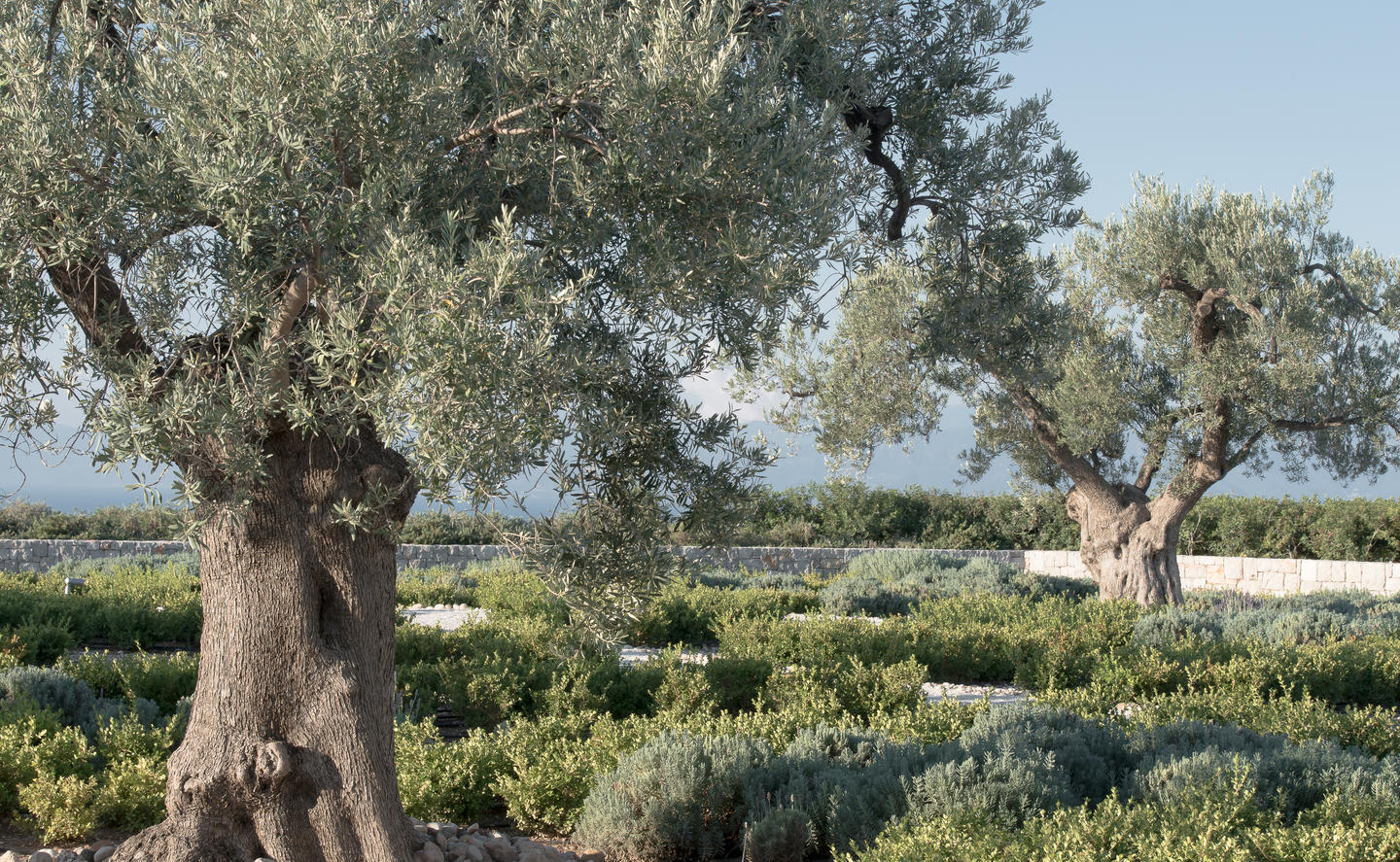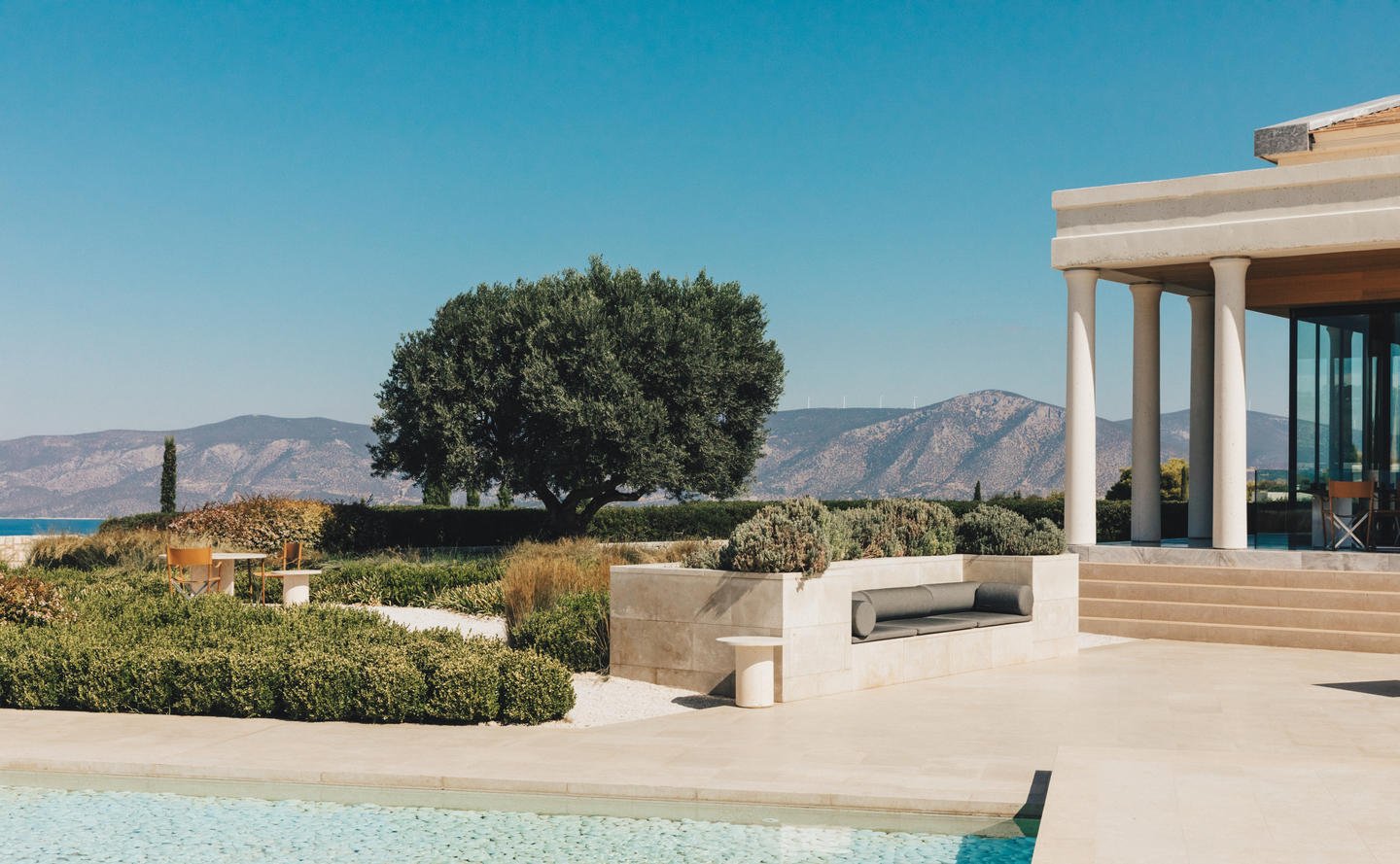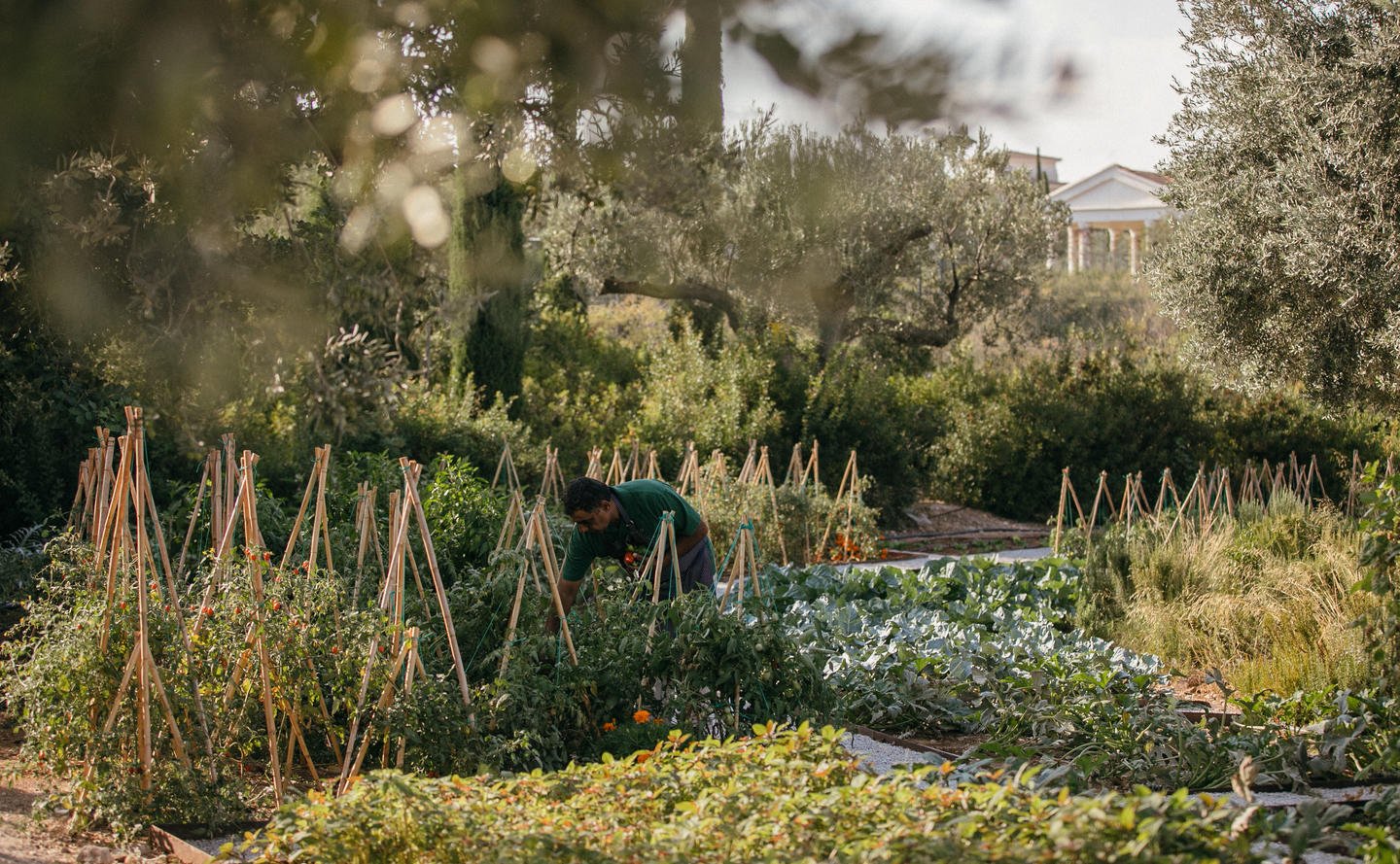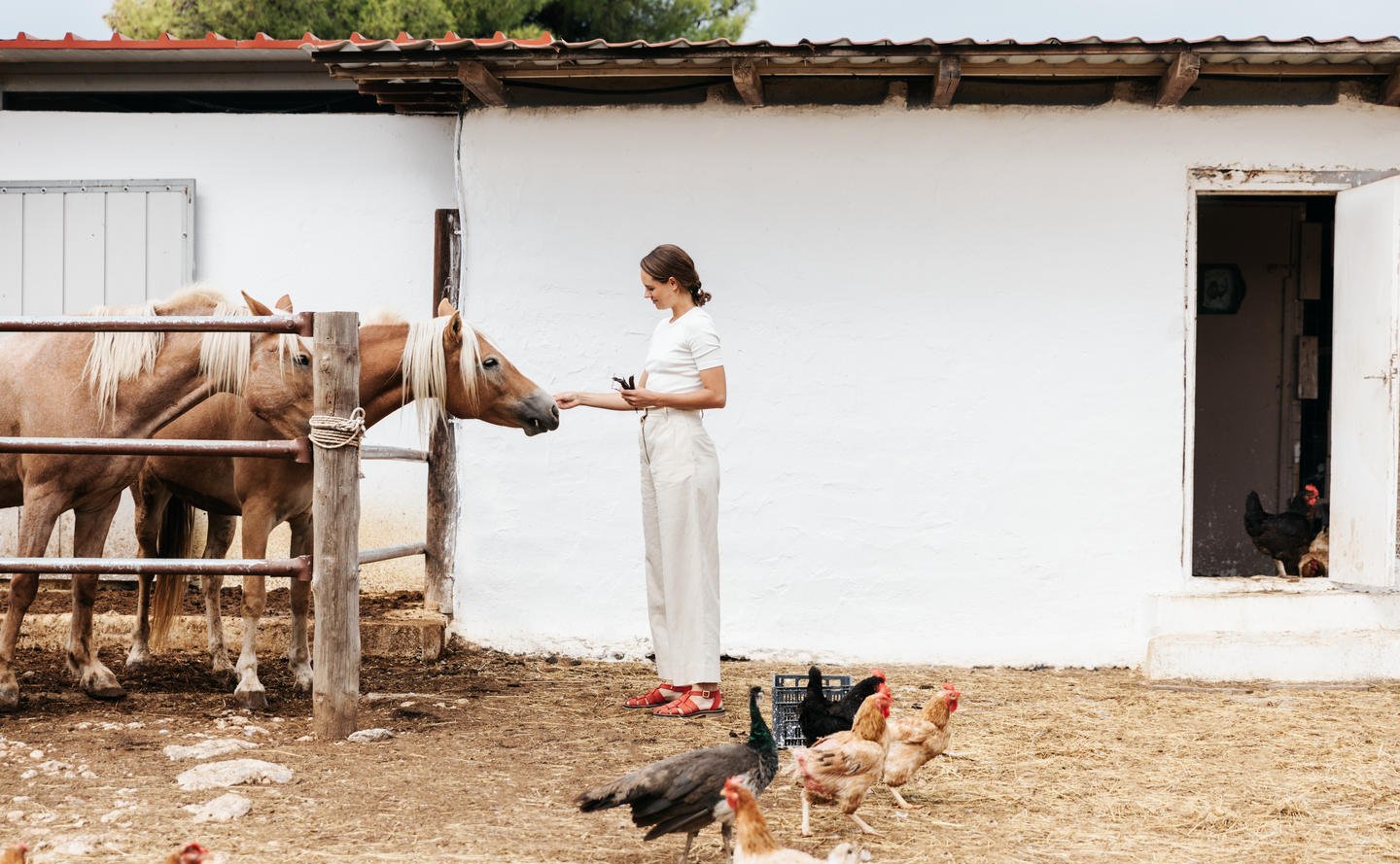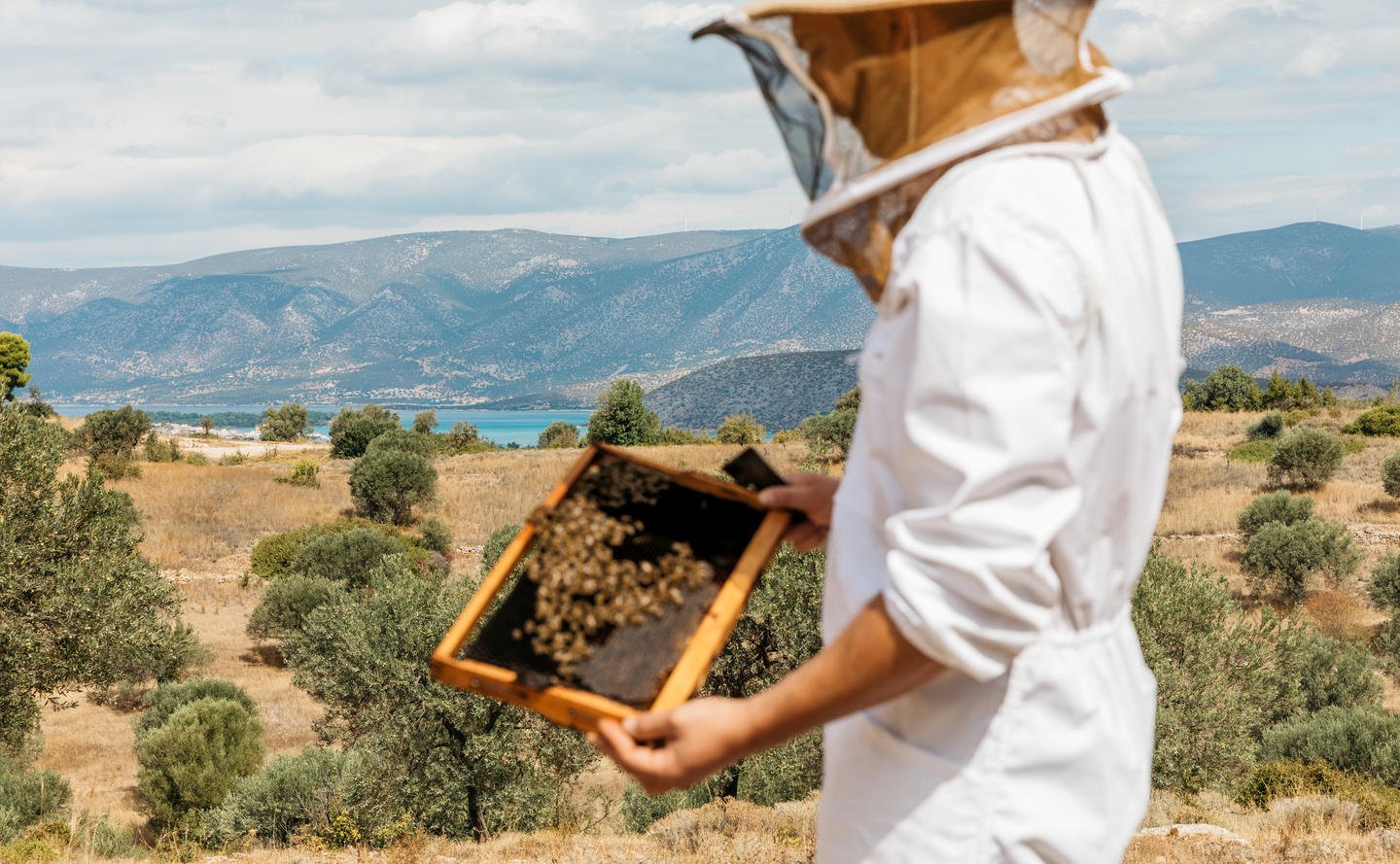Composting
Leftovers sent to landfill produce harmful greenhouse gas emissions through anaerobic decomposition. This emits methane, which is 21 times more potent than CO2. At Amanzoe, all organic scraps are added to compost in the resort’s extensive gardens. After a cycle of around five or six months the compost works as the ultimate soil-enricher, helping the resort strive for a circular economy.
Bioclimatic architecture
The architectural style of Amanzoe is ecologically sensitive in a way that aligns with nature. Buildings have been designed with optimal orientation to maximise sunlight and breeze allowing them to rely less on artificial lighting, heating and cooling systems, reducing the building's carbon footprint.
In addition, photovoltaic panels heat the resort’s water, meaning less reliance on power from the national grid while the resort also has more than 7,000 metres of planted green roofs. The roofs work to insulate the building naturally, capture rainwater, process greenhouse gases, attract butterflies and wildlife, and, through the process of evapotranspiration, lower the temperature of the roof itself, reducing the need for cooling systems. Artificial ponds and infinity pools in the landscaping of the grounds also help enhance favourable conditions for a microclimate and biodiversity.
